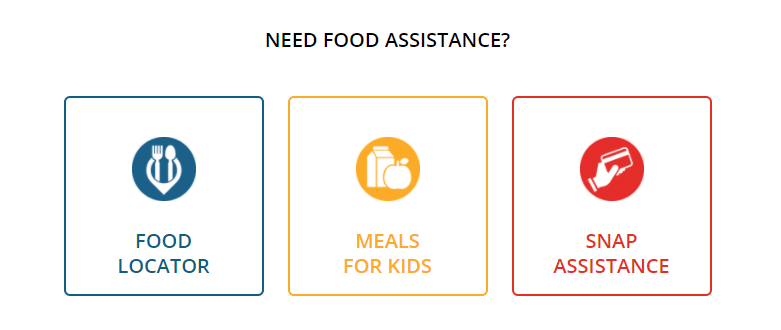As the Director of Technology at LimeLight, I lead our development team and oversee the Development & Testing phase of our website projects. This article describes this phase and what you can expect.
This blog is also part of a series that covers each phase of our website process. You can navigate through this series using the links below:
- What to Expect in the Website Discovery Process
- Website Strategy & Site Architecture Process
- Website Content and Design Process
Recap from website content & design
The Development phase of the website process follows, or may run in parallel to the Content & Design phase where we:
- Wrote copy for all pages of the website
- Designed a style guide and high fidelity mockups for the website
Our approach to development
When it comes to the Development & Testing phase of a website, our overall goal is to take what has been approved in the Content & Design phase and build it into a CMS (Content Management System). A CMS allows you to take control of the management of your website’s content over the long term – giving you a wide degree of flexibility to make changes even after the initial website development has been completed. We typically recommend WordPress as a CMS platform to our customers, but work in a wide variety of others, including HubSpot, DotNetNuke, Drupal, SiteCore, Netlify, and ExpressionEngine.
With every website project, we ensure that one or more developers are dedicated to the project from the start. This ensures that they have a strong grasp of the website’s goals, good context with the client, and are on the same page with the rest of the team. The last thing you want in a website project is a set of people in silos — where one group “chucks their stuff over the fence” to the next group to do their part, with communication amongst the team only happening during these transitions. This approach equates to something more like a game of telephone, where the communication gets more and more garbled the further along it goes.
Developers become particularly involved in a website project during the Content & Design phase, where they collaborate with the design team to ensure that everything being proposed is technically feasible, and will work well within a CMS environment. This carries on throughout the Development & Testing phase, as developers will continue to collaborate with the design team throughout to ensure they are fulfilling the vision for the look and feel of the website.
The CMS build
Once you have approved the site’s design, we start to build page templates within the CMS that has been chosen for the website project. Templates are the “shells” of pages that content will live within. Typically, your website’s homepage will have a very customized template, and several other unique pages of the website will also have fairly custom templates. We’ll also build templates that are more minimalistic, that you can use to add additional content pages to your site later on.
As we’re building page templates, we’ll also set up the site’s navigation. Navigation and page templates go hand-in-hand, because as you add new pages to your site, you’ll often want to expose those in the site’s main navigation. The main navigation of your site typically includes a top of the page navigation bar of some kind, and links in the site’s footer. We ensure that these are easily editable within the CMS you choose, so that you are able to continue to add onto your site in the future.
In addition to building templates, we also build custom blocks for your site as needed to match the designs. A custom block is a content “widget” that is unique to your site, that can be re-used throughout the site as needed. The squares with icons and text below are an example of a custom block:

These are reusable and flexible, in that a content editor in the CMS can choose the color of the block, the icon that goes with it, and the text as well. Something like this can be re-used throughout a site and customized each use, without the need for future developer involvement.
For the most specialized aspects of your site, our developers will custom code those pieces. The more specialized and custom coded things are, the less flexibility you’ll typically have within the CMS to edit it later on. This is a concern that our content, design, and development teams collaborate with you on throughout the lifetime of a website project, to ensure that your final editing capabilities on the site match your expectations.
Internal testing
Every site that we build goes through a rigorous QA (Quality Assurance) process, with multiple team members involved. Overall, the project manager for the website is responsible for ensuring that the QA process is carried out thoroughly and successfully. They direct a primary QA resource to test all aspects of the site. The main elements that this person tests are:
- Does the final site build match design?
- Does the site look correct on a variety of devices and web browsers, both desktop and mobile?
- Does the initial content entered into the CMS match the final content that you approved?
Once QA has been completed, the site’s developer goes back through to make any adjustments that are needed.
In addition to the above testing, our creative director, the site’s designer, and your account manager also sign off on the site — ensuring that it meets our highest standards in terms of matching the creative vision and business objectives that we have agreed upon with you.
Client review
Once we’ve gone through our internal testing, we turn the site over to you for review. This allows you to give us one final round of feedback, so that we can make any last minute tweaks to ensure that the site perfectly matches your vision. We use tools that make it easy for you to submit your last set of changes, and then our team will collaborate with you to get those implemented.
After your final round of review is completed, the site is ready to launch!
Site launch
When the site is ready to launch, we’ll work with you to determine an exact date and time to launch the site. We typically recommend launching on a Monday, as that allows all hands to be on deck immediately after for the next several days to ensure things run smoothly. However, we’ll be sure that we can accommodate any launch day that you choose to support your business objectives.
Site launch usually consists of two primary steps:
- Publishing the site to a web server
- Pointing your domain name (e.g. yourcompany.com) at that web server
One of our lead developers handles the technical aspects of the site launch process. Oftentimes there is a lot of coordination that needs to happen, particularly if you want to host the site’s web server in-house, or if you have your own internal IT team that needs to assist with changing the domain name. We’ll collaborate with you every step of the way to ensure a smooth launch at the time of your choosing. Once the site is live, we’ll run a final round of diagnostics and speed checks to ensure that everything is running smoothly.
This completes our blog series on the LimeLight Marketing website process. I hope this information was helpful as you plan for your new website. Would you like to visit with one of our website specialists? If so, contact us by phone or email and we’ll schedule a discovery call to learn about your project and advise on how we might help


